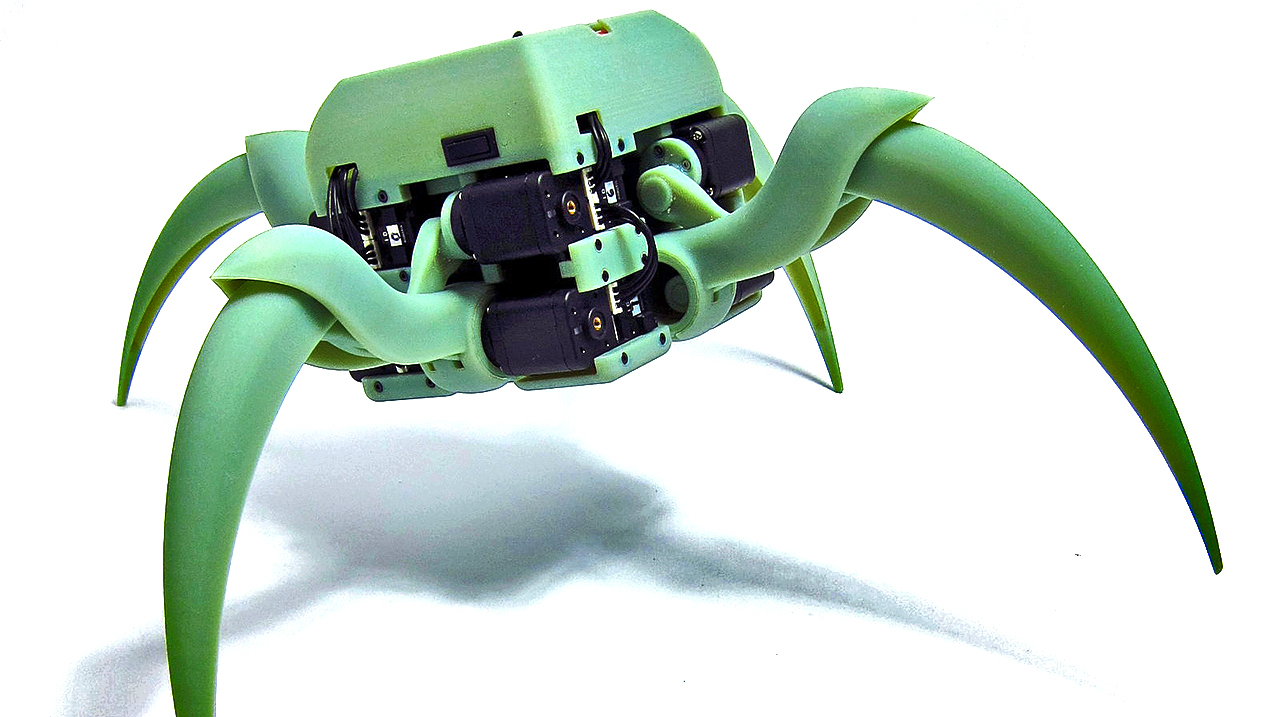With evolved brains, robots creep closer to animal-like learning
February 7, 2013

Aracna (credit: Cornell University)
Get ready for four-legged bots of all shapes and sizes — and for all sorts of uses — that learn how to maneuver through landscapes with the grace of a cheetah, Fast Company reports.
The most nightmare-inducing characteristic of Big Dog, DARPA’s robotic military mule, might be the way it moves so stiffly, yet unrelentingly, over treacherous battleground. Turns out the repetitive mechanical gait that calls to mind some coming robopocalypse is also a huge headache for Big Dog’s makers — and lots of the big thinkers behind walking bots envisioned for everyday domestic use.
Units like Big Dog move so awkwardly because of their rudimentary brains, which require pre-programming for every little action. A four-legged walking bot could jump smoothly over rocks or weave through trees with the fluid grace and reflexes of a cheetah — if it only had a better brain. One that was more animal-like.
Thanks to breakthroughs in understanding how biological brains evolve, a team of robotic researchers say they’re close.
“We are working on evolving brains that can be downloaded onto a robot, wake up, and begin exploring their environment to figure out how to accomplish the high-level objectives we give them (e.g. avoid getting damaged, find recharging stations, locate survivors, pick up trash, etc.),” says Jeffrey Clune, Assistant Professor of Computer Science at the University of Wyoming, who is part of the robotics team. …
(More)